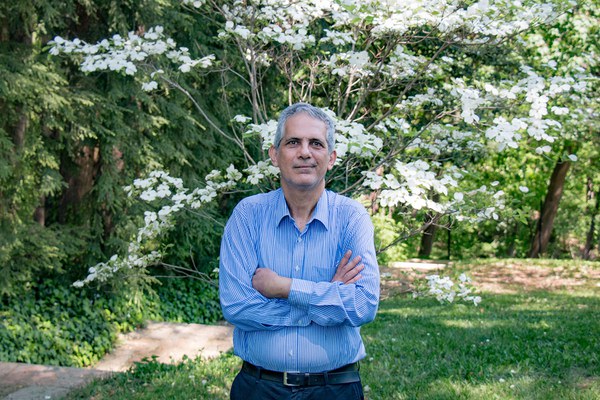Stephanos Efthymiadis, a professor in Byzantine Studies at the Open University of Cyprus, is a fellow in Byzantine Studies. His recent research report, “Hagia Sophia of Constantinople: Emperors, Patriarchs, and the People (532–1204),” sketched the development of the church as a political, social, and urban space, examining how both Byzantium and outsiders perceived the monumental space.
Q&A with Stephanos Efthymiadis
Hagia Sophia was a stage of sorts for public events, but you suggested it was an unstable stage, frequently used for conflicting purposes. How did that manifest in particular circumstances?
When Leo V the Armenian reinstated iconoclasm in the first years of the 9th century, he had to dethrone the patriarch, Nikephoros, who was a supporter of the veneration of icons. To achieve this, he convened a synod in Hagia Sophia itself, which went on to condemn the veneration of icons. This was a very strong claim, an almost personal way of saying, “this is not your territory any longer; this is mine, and I have the upper hand.” In later decades, that is, after 843 and the restoration of the veneration of icons, there was a conflict between two patriarchs, Ignatius and Photios, the leading religious figures in the second half of the 9th century. All subsequent synods, which either endorsed or condemned their ideas, were also convened in Hagia Sophia. This was an innovation of sorts. In late antiquity, synods would either have been convened outside Constantinople, or in the palace—not necessarily in the Great Palace, but in a secular building. If we leap forward to the late 12th century, a time of great political instability, all the “temporary” emperors, as we might call them, were proclaimed inside Hagia Sophia. Not in the forum, not in the hippodrome, not in the palace. So by then the building had clearly become a kind of political arena.
When discussing how false narratives were created about the church, you described a word-of-mouth process in which people wove popular myths and stories together and applied them to the church. Talk more about that.
The idea that these narratives about the construction of Hagia Sophia were circulated and put together in the last decades of the 9th century isn’t mine, but I think I furthered the argument by placing the phenomenon in the context of the conflict between Ignatius and Photios. These narratives reflect the impression we have today that Hagia Sophia was a popular monument. For the medieval beholder, it would have been inconceivable how this superb building came about, so you had to explain, in a way the medieval mind could comprehend, how the building had been constructed. This was done by putting together a series of separate stories—each corner of the building, each side, each small feature had its own history, its own narrative. It was actually kind of a hodgepodge of anecdotes, put together without any real connecting link.
The church was built by Justinian in almost six years—he beat the record. But in these narratives that period is prolonged to something like twenty years—again, it was unbelievable that this church could have been built so quickly. What’s more, these narratives undermine Justinian’s role in the whole project; we somehow get back to the idea that the real founder of the Hagia Sophia was Constantine, which historically isn’t true. There’s a tendency to mythologize the church that you really don’t see before, and, as an idea, this clearly originates in the local experience. The accounts of pilgrims and foreigners tend to associate the edifice with a divine element, whereas Constantinopolitan accounts have a secular orientation.
At the end of your talk you moved past 1204 and talked about figures like Gaspare Fossati, who renovated the Hagia Sophia in the 19th century. How are these figures connected to the themes of your talk?
As usual, if we’re lacking information from the period we’re studying, we use material from later periods and try to make connections with the past. After 1204, in Byzantium’s last two and a half centuries, there’s still useful material to study, and I’ll see if I end up extending the chronological scope of my study. I should say that during my stay here I went through the Robert Van Nice Collection, which contains photographs of some two thousand graffiti from the Hagia Sophia. It’s hard to examine them systematically, of course, to put them in some chronological order or sequence, but they still offer a view of things from the bottom up, so to speak. I think what we get from the watercolors Fossati made of the church’s interior is the same idea of a popular building—it’s not the impression of the sacred and untouched edifice that we have today.

